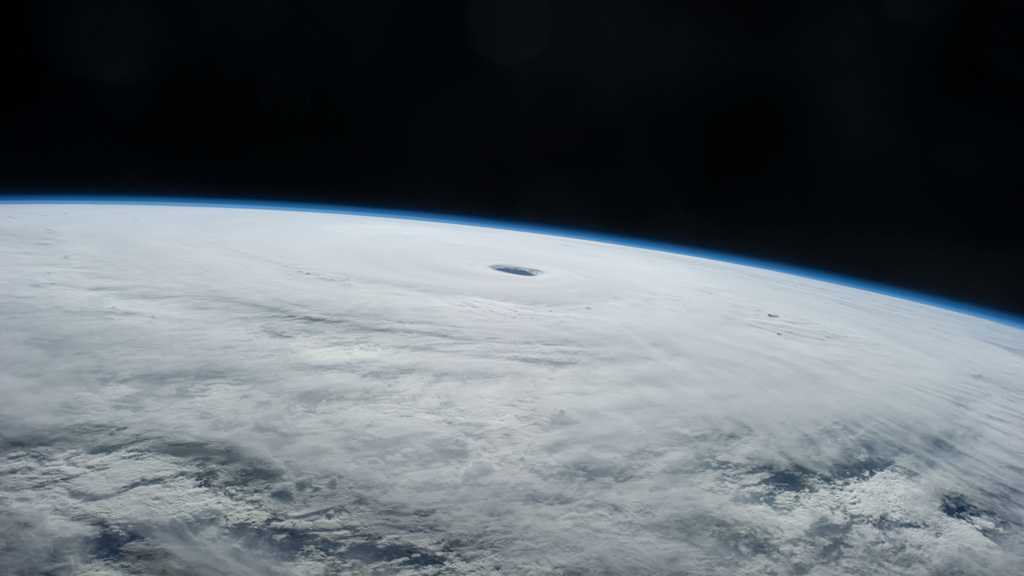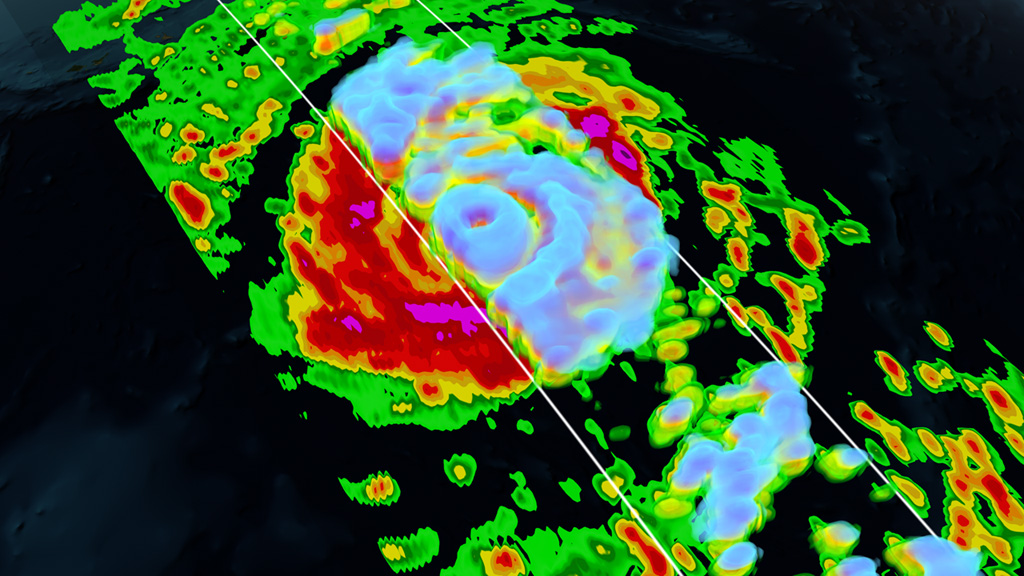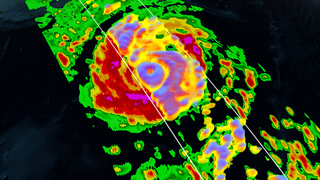Earth
ID: 11677

The western Pacific Ocean is a breeding ground for typhoons. On October 2, 2014, the region gave birth to one of the year’s most powerful storms—Typhoon Vongfong. Within days of its formation the storm intensified into a Category 5 typhoon, with maximum sustained wind speeds greater than 160 mph. Multiple NASA satellites, along with astronauts aboard the International Space Station, observed the typhoon as its rotating eye headed north toward Japan. One such satellite, called the Global Precipitation Measurement (GPM) Core Observatory, provided data on the location and intensity of precipitation falling from inside the storm. The measurements are used by scientists to monitor storms and make improved forecasts. Watch the video to see GPM’s view of Vongfong as it flew over the typhoon on October 9, 2014.



Super Typhoon




Related Story
Story Credits
Lead Visualizer/Animator:
Kel Elkins (USRA)
Visualizers/Animators:
Alex Kekesi (Global Science and Technology, Inc.)
Greg Shirah (NASA/GSFC)
Producers:
Ryan Fitzgibbons (USRA)
Rani Gran (NASA/GSFC)
Lead Scientists:
Gail Skofronick Jackson (NASA/GSFC)
Dalia B Kirschbaum (NASA/GSFC)
George Huffman (NASA/GSFC)
Project Support:
Laurence Schuler (ADNET Systems, Inc.)
Ian Jones (ADNET Systems, Inc.)
Lead Writer:
Kayvon Sharghi (USRA)
Kel Elkins (USRA)
Visualizers/Animators:
Alex Kekesi (Global Science and Technology, Inc.)
Greg Shirah (NASA/GSFC)
Producers:
Ryan Fitzgibbons (USRA)
Rani Gran (NASA/GSFC)
Lead Scientists:
Gail Skofronick Jackson (NASA/GSFC)
Dalia B Kirschbaum (NASA/GSFC)
George Huffman (NASA/GSFC)
Project Support:
Laurence Schuler (ADNET Systems, Inc.)
Ian Jones (ADNET Systems, Inc.)
Lead Writer:
Kayvon Sharghi (USRA)
Please give credit for this item to:
NASA's Goddard Space Flight Center
Cover image courtesy of NASA/JSC/ISS
Aqua satellite image courtesy of NASA/GSFC/MODIS Rapid Response Team
NASA's Goddard Space Flight Center
Cover image courtesy of NASA/JSC/ISS
Aqua satellite image courtesy of NASA/GSFC/MODIS Rapid Response Team
Short URL to share this page:
https://svs.gsfc.nasa.gov/11677
Keywords:
NASA Science >> Earth
SVS >> App
https://svs.gsfc.nasa.gov/11677
Keywords:
NASA Science >> Earth
SVS >> App








